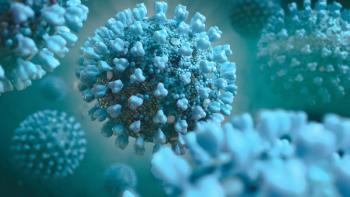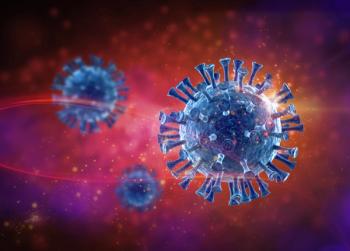
- Drug Topics June 2022
- Volume 166
- Issue 6
How Pharmacists Can Help with Long COVID Symptom Management
Staying abreast of current data on the condition is vital.
Long COVID goes by several names: post-COVID conditions, postacute sequelae of SARS-COV-2 infection (PASC), long-haul COVID, post-acute COVID syndrome (PACS), and chronic COVID.1 But regardless of the term used, the exact definition and symptomology of the condition are still developing as the science unfolds.
Long COVID involves a constellation of mild to severe symptoms across body systems.1 According to the CDC, it consists of “new, recurring, or ongoing symptoms and clinical findings 4 or more weeks after infection, sometimes after initial symptom recovery.”1 Even those who have never tested positive—due to inadequate or inaccurate testing, false-negative antibody tests, or waning antibody levels—can develop long COVID, noted the agency. At present, no avail- able laboratory tests exist to confirm the condition.
Patients of any age can develop long COVID, but it is more common in adults.1 A recent meta-analysis of 41 studies published online in the Journal of Infectious Diseases found the global prevalence of the condition to be 43%, which is higher than that of previously published findings.1 The authors estimated that approximately 200 million people have experienced or are experiencing long COVID worldwide.2
A Review of Long COVID Symptoms
Long COVID has documented, multiorgan system effects.1 According to Yale Medicine, the CDC, and Britain’s National Institute for Health and Care Excellence,3,4 these symptoms include, but are not limited to, the following:
Cardiovascular: Rapid or irregular heartbeat (palpitations), autonomic dysfunction such as postural orthostatic tachycardia syndrome (POTS)
Respiratory: Shortness of breath, chest pain or discomfort, cough
Gastrointestinal: Diarrhea, nausea and/ or abdominal pain, reduced appetite
Neurological: Memory loss, brain fog, loss of smell and/or taste, headache, insomnia, numbness, delirium, visual impairment, and mobility problems
Psychological: Anxiety, depression, posttraumatic stress disorder
Dermatological: Rashes, hair loss
Musculoskeletal: Joint pain, muscle pain/weakness
Ear, nose, and throat: Sore throat, earache, tinnitus, hearing loss
Reproductive: Menstrual cycle changes
Other ongoing symptoms: Fatigue, dizziness, intermittent low-grade fever, postexertional malaise
How Can Pharmacists Help?
Mary Ann Kliethermes, PharmD, director of medication safety and quality at the American Society of Health-System Pharmacists, shared some ways in which pharmacists can recognize long COVID in patients and assist them with managing their symptoms.
Although pharmacists do not diagnose long COVID in patients, they can help identify the condition, Kliethermes said. Pharmacists are increasingly likely to have contact with patients affected by long COVID and can use current data to identify those who may be at risk.
“Patients come to the pharmacy for help and may discuss their symptoms, seeking OTC relief for long COVID,” Kliethermes noted. She added that this is a good opportunity for pharmacists to provide counsel and recommend to patients that they visit a physician rather than attempt to treat themselves.
For long COVID management, currently, “there is no standard treatment protocol other than pulmonary and cardiac rehabilitation and the administration of supplemental oxygen,” Kliethermes told Drug Topics®. Patients may be treated for specific symptoms by a primary care physician or a specialist of the affected body system.
Pharmacists should help patients coordinate their prescriptions across specialties to prevent drug interactions, Kliethermes added. They can also coordinate with patients to evaluate what OTC drugs they are taking along with prescribed medicines, to prevent additional interactions and maximize effectiveness. Pharmacists can also advise patients which OTC products can help alleviate symptoms.
Kliethermes emphasized that there are no proven alternative medicine treatments for long COVID, so pharmacists should ensure these substances do not interact with medically approved treatments. Finally, she advised pharmacists to keep up with developments in the literature as the science evolves by monitoring clinical trials and using research databases such as PubMed.
Treatment Outlook
Other medications are being examined for their potential global effectiveness, rather than just the ability to target individual symptoms. One theory is that long COVID symptoms are caused by microclotting. One study, whose findings were recently published in Biochemical Journal, explored the therapeutic implications of anticoagulant use: “Consistent with this [study’s data], in a preliminary report, it has been shown that suitable and closely monitored ‘triple’ anticoagulant therapy that leads to the removal of the micro clots also removes the other [long COVID] symptoms,” the study authors wrote.5
Another possible avenue of treatment is antihistamines, with data from 2 case studies published in the Journal for Nurse Practitioners showing positive results for long COVID symptoms.6 The study authors noted that these data add to those of “previous studies, [whose authors] have reported that patients hospitalized with COVID-19 demonstrated symptom improvement after administration of a histamine antagonist.”6-9 Research in these areas is still nascent, and not yet clinically approved.
The biological mechanism of long COVID remains unclear. Recent studies findings published in Frontiers in Microbiology examined the potential causes, including injury to 1 or more organs due to acute SARS-CoV-2 infection, the virus persistently infecting specific tissues, or the reactivation of neurotrophic pathogens (such as herpesviruses), as COVID-19 dysregulates the immune system. Those investigators also noted that long COVID may be caused by SARS-CoV-2 interacting with the patient’s virome or microbiome communities or by coagulation or clotting issues, or result from dysfunctional vagus nerve or brainstem signals. Other possibilities include primed immune cell ongoing activity, and autoimmunity caused by “molecular mimicry between pathogen and host proteins.”10 Because of the wide range of potential causes, the authors emphasized that the individualized array of symptoms in each patient will require different approaches to offer the best care.
While the science develops, pharmacists can help patients manage this mysterious and often debilitating condition. Pharmacists and providers can follow the CDC’s interim guidance11 on evaluating and caring for patients with long COVID.
“Understanding of post-COVID conditions remains incomplete and guidance for healthcare professionals will likely change over time as the evidence evolves,” the CDC wrote.11 It is essential to afford practicing pharmacists the time and access to resources and professional development to keep up with emerging research, so they are prepared to identify patients with long COVID and assist them with symptom management and recovery.
References
1. Post-Covid Conditions: Information for Healthcare Providers. Centers for Disease Control and Prevention. Updated July 9, 2021.
2. Chen C, Haupert SR, Zimmermann L, Shi X, Fritsche LG, Mukherjee B. Global Prevalence of Post COVID-19 Condition or Long COVID: A Meta-Analysis and Systematic Review [published online ahead of print, 2022 Apr 16]. J Infect Dis. 2022;jiac136. doi:10.1093/infdis/jiac136
3. Long COVID (Post-Acute Sequelae of SARS CoV-2 infection, PASC). Yale Medicine. 2022. Accessed April 20, 2022.
4. COVID-19 rapid guideline: managing the long-term effects of COVID-19. National Institute for Health and Care Excellence. Published December 18, 2020. Updated November 21, 2021. Accessed April 20, 2022.
5. Kell DB, Laubscher GJ, Pretorius E. A central role for amyloid fibrin microclots in long COVID/PASC: origins and therapeutic implications. Biochem J. 2022;479(4):537-559. doi:10.1042/BCJ20220016
6. Pinto MD, Lambert N, Downs CA, Abrahim H, Hughes TD, Rahmani AM, Burton CW, Chakraborty R. Antihistamines for Postacute Sequelae of SARS-CoV-2 Infection. J Nurse Pract. 2022 Mar;18(3):335-338. doi: 10.1016/j.nurpra.2021.12.016. Epub 2022 Feb 7. PMID: 35153633; PMCID: PMC8820139.
7. Malone RW, Tisdall P, Fremont-Smith P, et al. COVID-19: Famotidine, Histamine, Mast Cells, and Mechanisms. Front Pharmacol. 2021;12:633680. Published 2021 Mar 23. doi:10.3389/fphar.2021.633680
8. Hogan Ii RB, Hogan Iii RB, Cannon T, et al. Dual-histamine receptor blockade with cetirizine - famotidine reduces pulmonary symptoms in COVID-19 patients. Pulm Pharmacol Ther. 2020;63:101942. doi:10.1016/j.pupt.2020.101942
9. Ennis M, Tiligada K. Histamine receptors and COVID-19. Inflamm Res. 2021;70(1):67-75. doi:10.1007/s00011-020-01422-1
10. Proal AD, VanElzakker MB. Long COVID or Post-acute Sequelae of COVID-19 (PASC): An Overview of Biological Factors That May Contribute to Persistent Symptoms. Front Microbiol. 2021;12:698169. Published 2021 Jun 23. doi:10.3389/fmicb.2021.698169
11. Evaluating and Caring for Patients with Post-COVID Conditions: Interim Guidance. Centers for Disease Control and Prevention. Updated June 14, 2021. Accessed April 20, 2002.
Articles in this issue
over 3 years ago
Hacking Diabetes: The DIY Bionic Pancreas Is Here to Stayover 3 years ago
Empowering Pharmacist-Physician Collaborationover 3 years ago
Improving Care Disparities for the LGBTQ+ Communityover 3 years ago
Daridorexant Receives Approval for Insomnia Treatmentover 3 years ago
Curb HIV Spread With PrEP Access in the Pharmacyover 3 years ago
A Lesson From the Friendly SkiesNewsletter
Pharmacy practice is always changing. Stay ahead of the curve with the Drug Topics newsletter and get the latest drug information, industry trends, and patient care tips.





















































































































































